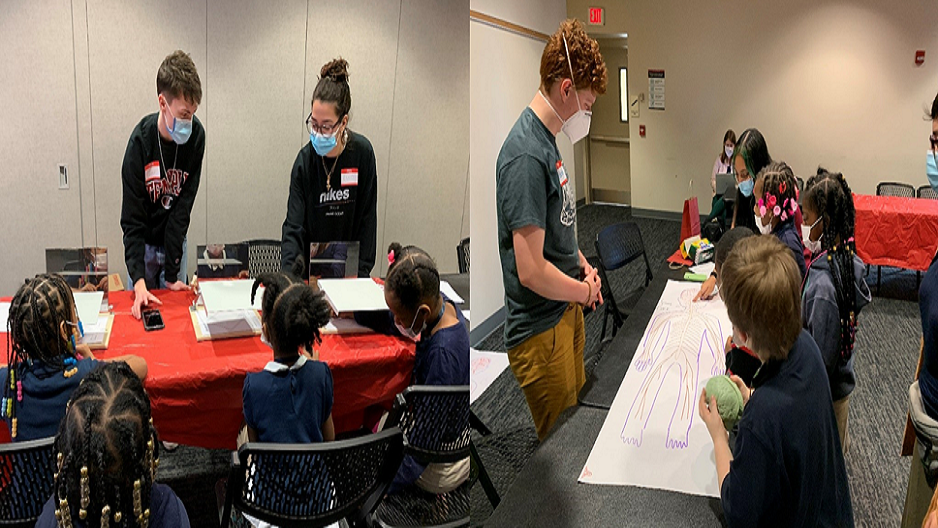Temple’s Psychology and Neuroscience Program and Youth Education and Maternal Support Association (YEMSA) Co-Host Brain Awareness Week 2022 In-person
Brain Awareness Week is a national campaign in March of every year that has the goal of promoting public interest in neuroscience. Events occur worldwide and bring together researchers, educators, and students who host interactive lectures and activities across a variety of venues, including K-12 classrooms, museums, and libraries.
This year, the Youth Education and Maternal Support Association (YEMSA; a student organization at Temple) hosted twenty-nine elementary students for an on-campus STEM event in Weiss Hall. The first-grade students who attended this on-campus event were experiencing a field trip for the first time, as all the students had begun schooling during the COVID-19 pandemic. The visit was organized in partnership with Achieve Now, a nonprofit that works with K-3rd grade students in the Philadelphia school district to provide one-on-one instruction to improve literacy.
To create an engaging and exciting STEM/brain awareness event, YEMSA partnered with two other student organizations, Temple University’s Chemical Society (TUCS) and Leadership, Education, and Development in Science (LEADS) to create eight interactive demonstrations. Each of the hands-on activities were designed to teach the first graders about the brain and about science more generally. One popular activity demonstrated procedural learning in the brain (See Picture 1) with the children practicing tracing a square using only the mirror image reflection of their hand as a guide. Another demonstration combined neuroscience education with an art activity, with the elementary schoolers drawing the nervous system on a large cutout (See Picture 2). Other demonstrations included showing real animal brains to explain how the brain differs across species, a lesson in DNA using strawberries (courtesy of LEADS) and making muscle recordings to show how the nervous system uses electrical signals to communicate. The STEM event ended with each child receiving a book titled “Your Fantastic Elastic Brain” courtesy of Heather-Lewis Weber, outreach coordinator for the College of Liberal Arts.
The young students left the event excited about the brain, with a first grader even remarking, “I didn’t even know the brain does so much!” The event was even more special as it marked one of the first in-person outreach events for YEMSA since the start of the COVID-19 pandemic.
Dr. Mansi Shah, who helped with the coordination and planning of this event, thanks Dr. Elizabeth Gunderson and the Psychology and Neuroscience Department Outreach and Translation Committee for their generous support of the event.

